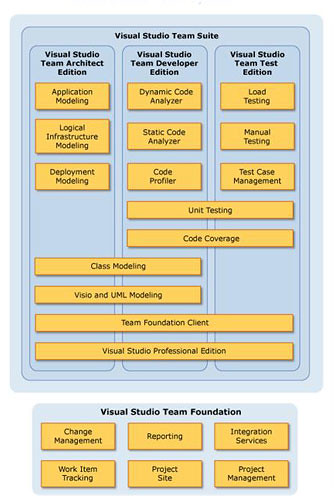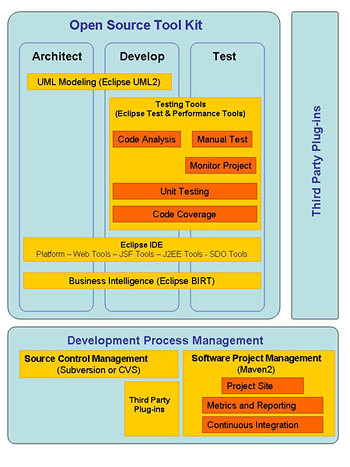First the Microsoft stack: I found two good resources for describing MVSTS roadmap and getting an overview of MVSTS.

Second the Open Source stack: I decided to focus on the Eclipse set of tools (see references below) and Apache Maven for software project management.

After integrating all the tools out there, the Open Source stack comes fairly close functionally to the MVSTS stack. Unfortunately, integrating all those technologies into one cohesive package requires a good amount of work. I personally feel that this is unfortunate. In my mind it raises some fundamental questions:
- What purpose are open source foundations fulfilling when developing their product offerings? Is it technology adoption, industry cooperation, technology innovation? Providing a cohesive offering requires making some choices that are difficult in foundations with members with sometimes competing interests. Here Microsoft has a clear advantage. So how can the open source community provide a cohesive tool kit for managing the software development process? Is it a desirable outcome?
- Can commercial entities leverage a common offering and maintain a coherent strategy and competitive advantage? A lot of the value in commercial offerings comes from the integration of diverse technologies into a cohesive offer. If open source foundations fulfill this role, can commercial entities' offerings still remain attractive? Does this cannibalize product offerings in favor of services?
Eclipse References:
- Eclipse UML2 tools
- Test and performance tools
- Testing tools
- Monitoring tools
- Web tools
- SDO tools.
No comments:
Post a Comment